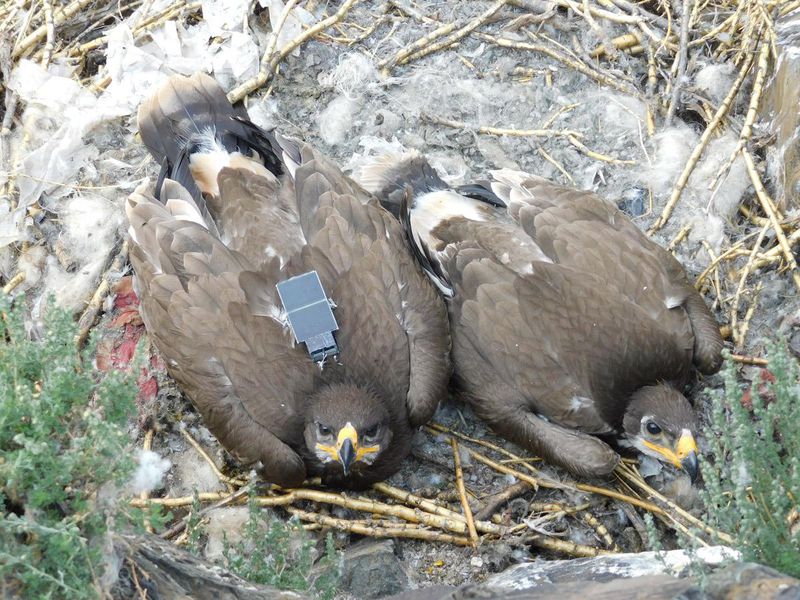
If you want to study endangered birds, you first need to know when and how they travel. But following eagles around is not exactly doable, so instead, researchers equipped the birds with unobtrusive GPS transmitters.
The Russian Raptor Research and Conservation Network (RRRCN) team had equipped 13 steppe eagles with SMS-based tracking devices. The devices are turned off for most of the day to save battery, but they get turned on four times a day.
The birds spend most time in areas without coverage, but that’s not a big problem: whenever the birds reach phone coverage, all the texts are sent at once. It’s not uncommon for dozens or even a hundred messages to be sent at once.
The system works, but it’s not perfect, as one steppe eagle called Min showcased.
Min was off the grid for a while in 2019 — which again, is unsurprising. But when he came back on the grid, he came with a nasty surprise: a big phone bill with a ton of roaming charges.
Steppe eagles can travel over 100 km a day. When a text is sent from Russia to Russia or from Kazakhstan to Russia (which is where eagles often hang out), the charge isn’t too big. But Min showed up again in Iran — which landed the researchers a much bigger bill than expected.
“These beasts were out of range in Kazakhstan all summer and now once they reached the super expensive Iran and Pakistan, they are spewing out hundreds of text messages with their locations,” wrote Igor Karyakin of the Russian Raptors Research and Conservation Network.
“They really left us penniless, we had to take out a loan to feed the tracker device,” Karyakin added.

Steppe eagles typically breed in Russian and Kazakhstan, spending their winter in India and Africa. Researchers weren’t expecting them to pop up in Pakistan or Iran. It’s good news, in a sense, as they’ve found out more about their behavior, which is one of the main objectives. But it almost bankrupted the study.
Roaming prices in Iran are 25 times more expensive than the price for messages from Russia, which added to over USD 110/day in roaming fees for this single eagle who decided he wanted to stray from the beaten path.
“Min was out of cellular range for the whole summer in Kazakhstan, and his tracker was unable to send any data until he had come back into range in early October,” the researchers explain in a blog post.
The story has a happy ending, though. The researchers made a public appeal and were able to fundraise $5,000 to cover Min’s phone calls and the project is still ongoing in 2020.
It’s not the first time tagged birds caused large phone bills. In 2018, Polish researchers tagged a stork with a GPS tracker that featured a SIM card. Storks migrate from Europe to Africa, and someone in Sudan somehow found the SIM card and used it to make long distance calls, landing a $2,700 phone bill on the Polish team.
If you want to support the steppe eagle conservation program, check out the Altai Project. At the bottom of the page, there’s a link to a donation form where you can select a checkbox “I want to sponsor the Russian Raptor Research and Conservation Network” and make a donation.
Steppe eagles are in need of help. The eagles spend their summers hunting in the open steppes and savannas of central Asia, retreating to Africa or southern Asia for the winter. Both of these large areas are being converted to agricultural areas, which is making it more challenging for the eagles to hunt. Poisoning, wind turbines, and power lines are also risks to the species. Some poachers and hunters also target them. The IUCN estimates that there are 50,000-75,000 left in the wild.
If you’re curious about what the eagles have been up to since Min’s 2019 adventures, you can follow their movements here.






